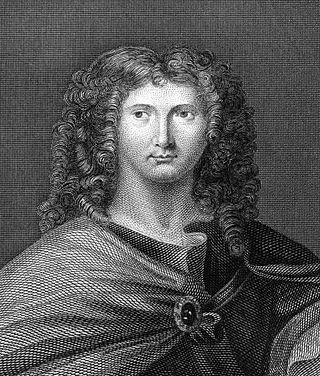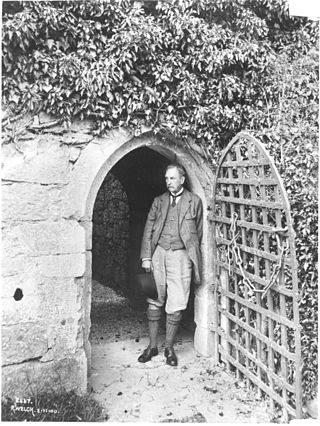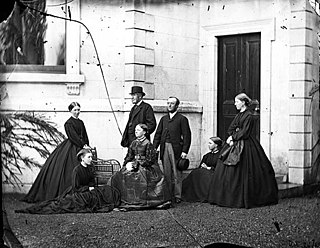
Marquess of Aberdeen and Temair, in the County of Aberdeen, in the County of Meath and in the County of Argyll, is a title in the Peerage of the United Kingdom. It was created on 4 January 1916 for John Hamilton-Gordon, 7th Earl of Aberdeen.

Earl of Longford is a title that has been created twice in the Peerage of Ireland.

Earl of Kingston is a title in the Peerage of Ireland. It was created in 1768 for Edward King, 1st Viscount Kingston. The Earl holds the subsidiary titles Baron Kingston, of Rockingham in the County of Roscommon, Viscount Kingston, of Kingsborough in the County of Sligo, Baron Erris, of Boyle in the County of Roscommon, and Viscount Lorton, of Boyle in the County of Roscommon, also in the Peerage of Ireland. He is also a baronet in the Baronetage of Ireland. Between 1821 and 1869 the earls also held the title Baron Kingston, of Mitchelstown in the County of Cork, in the Peerage of the United Kingdom.

Earl of Limerick is a title that has been created twice in the Peerage of Ireland, associated first with the Dongan family, then with the Pery family. It should not be confused with the title Viscount of the City of Limerick held by the Hamilton family also Earls of Clanbrassil.

Earl of Roden is a title in the Peerage of Ireland. It was created in 1771 for Robert Jocelyn, 2nd Viscount Jocelyn. This branch of the Jocelyn family descends from the 1st Viscount, prominent Irish lawyer and politician Robert Jocelyn, the son of Thomas Jocelyn, third son of Sir Robert Jocelyn, 1st Baronet, of Hyde Hall. He notably served as the Lord Chancellor of Ireland from 1739 to 1756. In 1743, he was raised to the Peerage of Ireland as Baron Newport, of Newport, and in 1755 he was further honoured, when he was made Viscount Jocelyn, also in the Peerage of Ireland. He was succeeded by his son, the second Viscount. He represented Old Leighlin in the Irish House of Commons and served as Auditor-General of Ireland. In 1770 he also succeeded his first cousin once removed as fifth Baronet of Hyde Hall. In 1771 he was created Earl of Roden, of High Roding in the County of Tipperary, in the Peerage of Ireland. Lord Roden married Lady Anne Hamilton, daughter of James Hamilton, 1st Earl of Clanbrassil and sister of James Hamilton, 2nd Earl of Clanbrassil, a title which became extinct in 1798.

Earl of Listowel is a title in the Peerage of Ireland. It was created in 1822 for William Hare, 1st Viscount Ennismore and Listowel, who had earlier represented Cork City and Athy in the Irish House of Commons.

Earl of Donoughmore is a title in the Peerage of Ireland. It is associated with the Hely-Hutchinson family. Paternally of Gaelic Irish descent with the original name of Ó hÉalaighthe, their ancestors had long lived in the County Cork area as allies of the Mac Cárthaigh clan; they lost out during the times of Oliver Cromwell. One branch of the family converted to the Anglican Church and after inheriting territories through his mother and adding "Hutchinson" to Hely, became the Earl of Donoughmore.

Earl Cawdor, of Castlemartin in the County of Pembroke, is a title in the Peerage of the United Kingdom. It was created in 1827 for John Campbell, 2nd Baron Cawdor.

Viscount Dillon, of Costello-Gallen in the County of Mayo, is a title in the Peerage of Ireland. It was created in 1622 for Theobald Dillon, Lord President of Connaught. The Dillons were a Hiberno-Norman landlord family from the 13th century in a part of County Westmeath called 'Dillon's Country'. His great-grandson, the seventh Viscount, was a supporter of the Catholic King James II of England and was outlawed after the Glorious Revolution. He founded 'Dillon's Regiment' of the Irish Brigade in the French Army, which was supported by the Wild Geese and achieved success at Fontenoy in 1745.

Viscount Charlemont is a title in the Peerage of Ireland. It was created in 1665 for William Caulfeild, 5th Baron Charlemont.

Viscount Hawarden is a title in the Peerage of Ireland.
Baron Crofton is a title in the Peerage of Ireland. It was created in 1797 for Dame Anne Crofton. She was the widow of Sir Edward Crofton, 2nd Baronet, of the Mote, who had represented Roscommon in the Irish House of Commons and had been offered a peerage just before his death. The peerage was instead bestowed upon his widow. She was succeeded by her grandson, the second Baron, who had already succeeded as fourth Baronet. He sat in the House of Lords as an Irish representative peer from 1840 to 1869 and served as a Lord-in-waiting in the three Conservative administrations of the Earl of Derby and in Benjamin Disraeli's first government. His son, the third Baron, served as an Irish Representative Peer between 1873 and 1912 and was also State Steward to the Lord Lieutenant of Ireland. His nephew, the fourth Baron, was an Irish Representative Peer from 1916 to 1942. As of 2014 the titles are held by the latter's great-great-grandson, the eighth Baron, who succeeded his father in 2007.
Baron de Freyne, of Coolavin in the County of Sligo, is a title in the Peerage of the United Kingdom. It was created in 1851 for Arthur French, 1st Baron de Freyne, with remainder to his younger brothers John, Charles and Fitzstephen French. He had earlier represented County Roscommon in the House of Commons and later served as Lord Lieutenant of County Roscommon. French had already been created Baron de Freyne, of Artagh in the County of Roscommon, in 1839, also in the Peerage of the United Kingdom but with normal remainder to heirs male. Lord de Freyne was childless and on his death in 1856 the barony of 1839 creation became extinct. The barony of 1851 creation survives according to the special remainder by his younger brother John, the second Baron.

Earl of Roscommon was a title in the Peerage of Ireland. It was created on 5 August 1622 for James Dillon, 1st Baron Dillon. He had already been created Baron Dillon on 24 January 1619, also in the Peerage of Ireland. The fourth Earl was a courtier, poet and critic. The fifth Earl was a professional soldier, politician and courtier: he was friendly with Samuel Pepys, who refers to him several times as "Colonel Dillon" in his famous Diary. After the death of the tenth Earl, there were two prolonged investigations by the Irish House of Lords during the 1790s to ascertain the legitimacy of his son Patrick, against the rival claim by Robert Dillon, a descendant of the seventh son of the first Earl and the next male heir in line. These eventually found in Patrick's favour. The titles became dormant on the death of the eleventh Earl in 1816. However, in 1828 the United Kingdom House of Lords decided that the rightful heir to the peerages was Michael Dillon, another descendant of the seventh son of the first Earl, who became the twelfth Earl. The House of Lords decided against Francis Stephen Dillon, an inmate of a debtors' prison who dubiously claimed descent from the third son of the first Earl. The titles became extinct on the death of the twelfth Earl on 15 May 1850.
William Power Keating Trench, 1st Earl of Clancarty was an Irish aristocrat and politician and later United Kingdom statesman at the time of the Act of Union. His family, through his son Richard, became prominent and hereditary members of the Netherlands' nobility.

Luke Gerald Dillon, 4th Baron Clonbrock KP PC (Ire) was an Irish peer.

Robert Dillon, 3rd Baron Clonbrock, was an Irish peer.
Thomas Dillon was an Irish judge and landowner: his descendants held the title Baron Clonbrock.
James Dillon, 1st Earl of Roscommon fought for the crown in the Nine Years' War. He was ennobled despite being a Catholic after his son Robert turned Protestant.

Earl of Arran is a title in the Peerage of Ireland. It is not to be confused with the title Earl of Arran in the Peerage of Scotland. The two titles refer to different places: the Aran Islands in Ireland, and the Isle of Arran in Scotland. The Irish earldom is held by the Gore family. The Scottish earldom is a separate title, held as a subsidiary title of the Duke of Hamilton.










